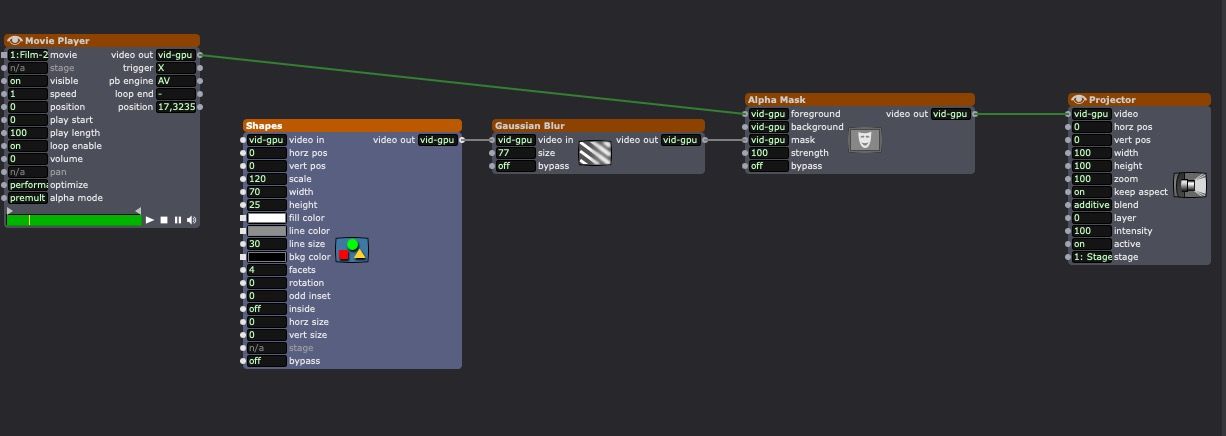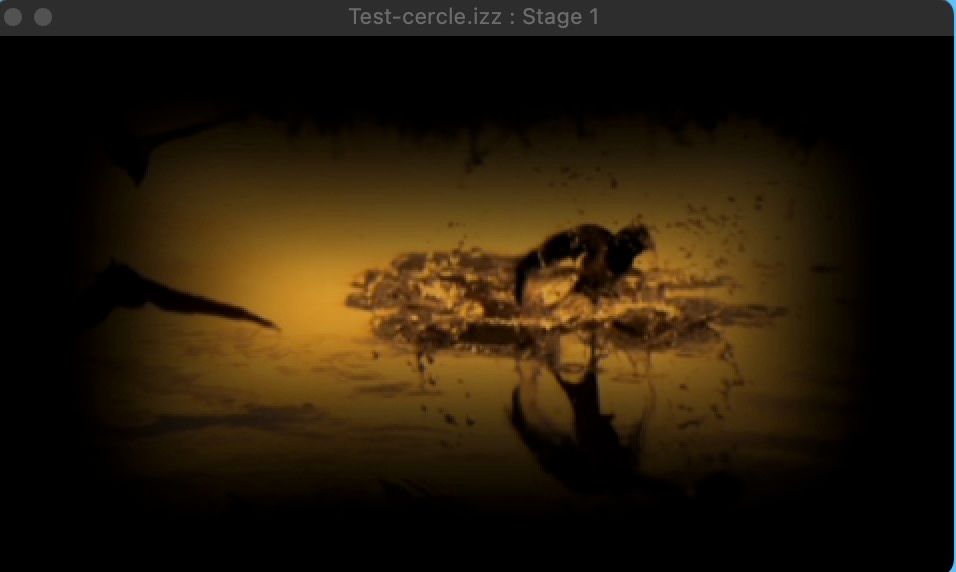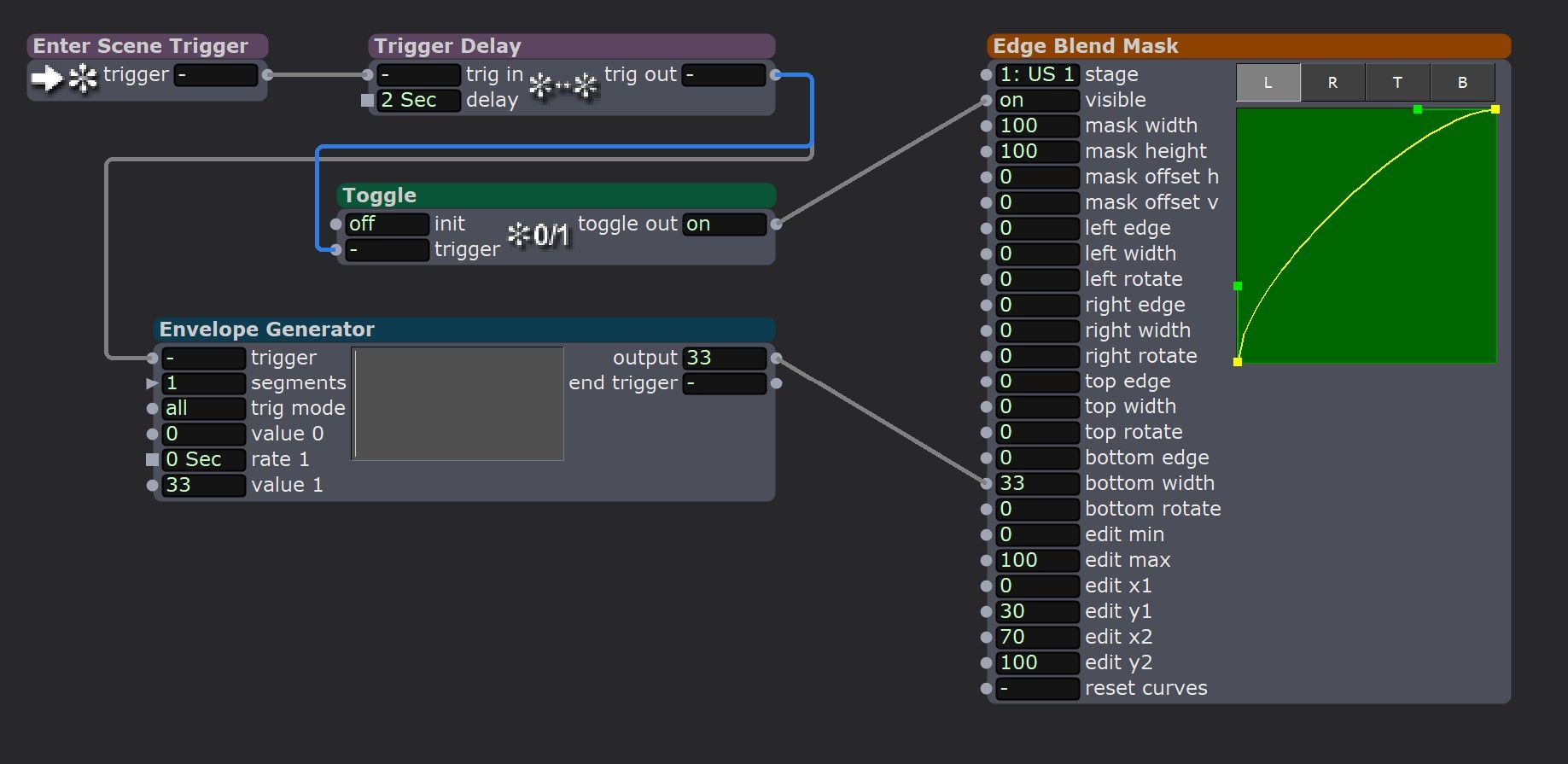Hello Jean-François,
That's a clever idea! I didn't realize that the line in various shades would affect how the blur works. Brilliant! In fact, it works with any colour, as I've learned. I just want to crop one edge, which is easily accomplished with the shapes actor.
Thank you!
Hugh
I don't know exactly how you want to use the Crop Actor, and depending on how you use it, my solution may not be very practical: I suggest using the Shapes, Gaussian Blur and Alpha Mask Actors. If you give the line in the Shapes Actors the colour medium grey, it increases the blurred area of the Gaussian Blur Actor depending on the size of the line and the grey value.

You can then define the crop size with the Scale, Height, Width and Position inputs.

Best regards,
Jean-François
A couple of years ago, @Woland helped me with a soft edge crop idea, which I have since turned into a user actor and use all the time:

The Gaussian Blur does a great job of softening the edge, but it's not very wide and I wonder if there's a way to adjust the width of that edge? There are times when I would like to have a very wide, very soft, gradient in the crop, much like what is possible in the Edge Blend Mask.
Many thanks!
Hugh
@woland @dbini these Pipo interfaces look great! Unfortunately I'm gonna have to wait until January until the next batch is available. Are these available anywhere else?
Best wishes,
Simon
@citizenjoe said:
this worked
Great!
not exactly what I imagined, I though you might animate the 'bottom width' value. Interesting you need to toggle the visible (mental note taken).
I believe the edge blend is applied after the scenes are composited, and therefore can't be mixed in this way.
The only option I can think of is to ensure the same settings for edge blend for both scenes during the crossfade, and then animate the Edge blend values with envelopes after the scene change has occurred. If its possible, a cut rather than a crossfade would tighten it up, but other wise, flow one after the other ( I would need to test, but there is a good chance the values push through only once when the second scene is activated for cross-fade, so you may be able to start the edge blend animation a short while (0.25) after the initialization of the scene).
Good morning!
I'm using the Edge Blend Mask in 2 scenes, and my hope is that there would be a smooth cross fade between them. However, when the crossfade begins, the mask sort of flashes on and then it flashes off when the cross fade ends. Please see the video (watch the bottom of the screen).
It's the same mask in each scene and it looks great when we are just sitting in the scene.
I don't want to use a Global Edge Blend, because I only need the mask for these two scenes. I've tried cropping with a softened edge, but it's not as good because I can't control the width of the softness like I can in the Edge Blend Mask actor.
Any thoughts would be welcome!
Thank you,
Hugh
You could adapt this template of mine and put an alpha mask inline: https://community.troikatronix.com/topic/5495/global-projection-mapping-simple-show-template
